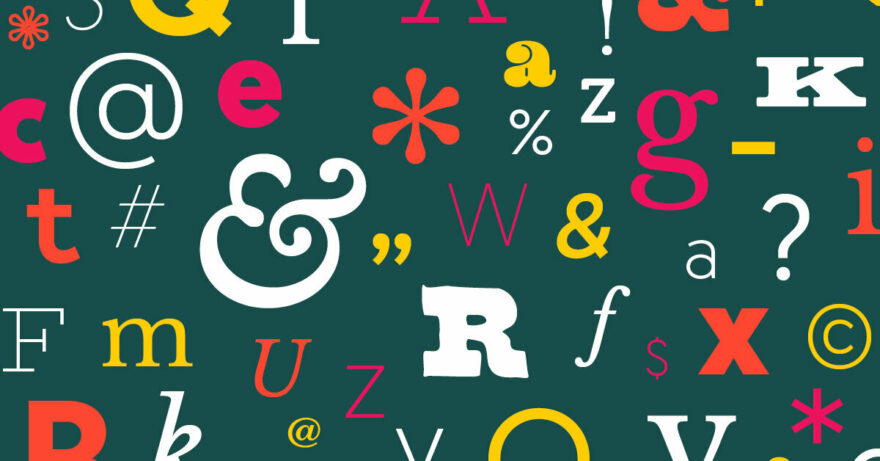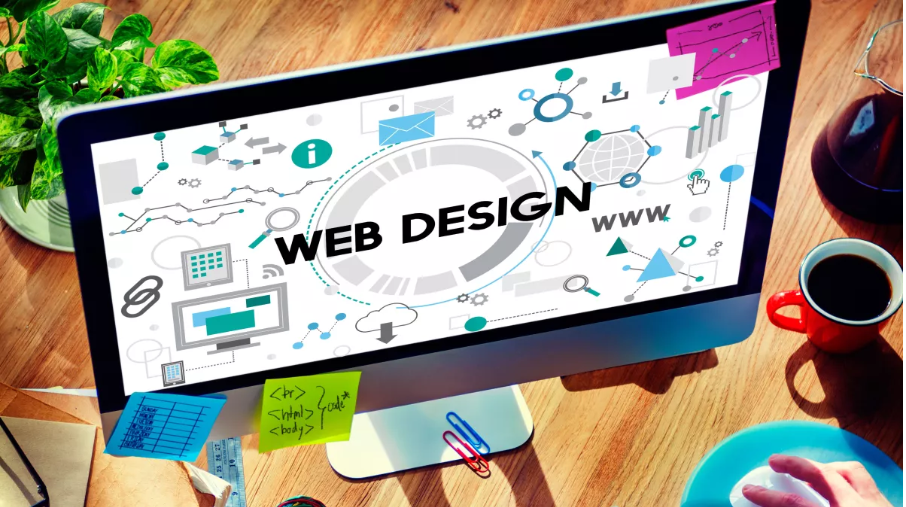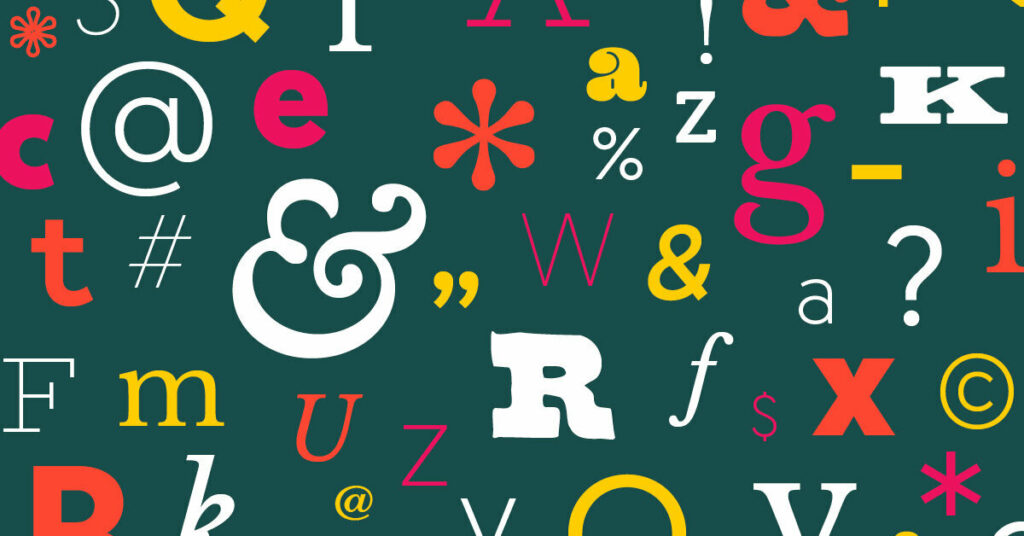Typography in graphic designing plays a crucial role. It is the art and technique of arranging types to make written language legible, readable, and appealing when displayed. It’s not just about selecting fonts but also about how those fonts are arranged and styled to convey a message effectively. In this blog post our Graphic Design Agency provides insight into why typography is so vital in graphic design and how it impacts the overall visual experience.
Why typography is important?
Graphic design typography holds significant importance in various fields, due to several key reasons:
Communication
Graphic design typography serves as a medium for conveying messages. Choice of graphic designing fonts, styles, and layouts can profoundly impact how information is perceived and understood by the audience. Effective typography ensures that the intended message is communicated clearly and efficiently.
Visual Appeal
Well-designed typography enhances the visual appeal of any content or design. It captures attention, emotions, and creates a memorable impression. Typography adds aesthetic value to design projects, making them more engaging and attractive to the audience.
Brand Identity
Consistent use of specific fonts and typographic elements across various brand materials helps establish brand recognition and differentiation. Typography becomes a visual representation of the brand’s personality, values, and positioning.
Visual Hierarchy
Typography helps establish a visual hierarchy within designs, guiding the viewer’s attention and organizing information in a structured manner. Through variations in font size, weight, color, and style, important elements can be emphasized, making it easier for the audience to navigate and comprehend the content.
Emotional Impact
Typography has the power to evoke emotions and set the tone for the content. Different fonts and typographic treatments can convey various moods, attitudes, and feelings. By carefully selecting typography that aligns with the desired emotional response, designers can enhance the overall impact and effectiveness of their designs.
Cultural and Historical Significance
Fonts often carry cultural and historical associations that can influence how they are perceived. Context and connotations of different typefaces allows designers to make informed typography choices that resonate with their target audience and the intended message.
Creativity and Expression
Provides designers with a creative outlet for self-expression and experimentation. Designers can innovate and create unique visual experiences that captivate and inspire audiences By pushing the boundaries of typography.
Establishing Visual Hierarchy
Visual hierarchy refers to the arrangement and prioritisation of elements in a design to guide the viewer’s attention. Typography plays a significant role in establishing this hierarchy by:
- Varying font sizes, weights, and styles to differentiate between headings, subheadings, and body text.
- Utilising whitespace and alignment to create balance and emphasis.
- Directing the viewer’s gaze through the use of typography placement and layout.
Conveying Tone and Message
Typography isn’t just about conveying words; it’s also about expressing emotions, tone, and the intended message of the design. Key points include:
- Selecting fonts that align with the desired mood or atmosphere of the design.
- Experimenting with different typographic elements such as letter spacing, kerning, and line height to reinforce the message.
- Understanding cultural and historical associations of different typefaces to ensure alignment with the intended message.
Enhancing Readability and Accessibility
The readability of a design significantly impacts its effectiveness in conveying information. To enhance readability and accessibility:
- Choose fonts that are legible across different devices and screen sizes.
- Ensure adequate contrast between text and background colors.
- Consider the needs of diverse audiences, including those with visual impairments, by using accessible typography practices.
Creating Brand Identity
Typography plays a vital role in establishing brand identity and recognition. Key points include:
- Developing a custom typography system or selecting fonts that reflect the brand’s personality and values.
- Consistently using typography across various brand touchpoints to reinforce brand identity.
- Balancing uniqueness with readability to create a memorable brand presence.
Reflecting Design Trends
Typography trends evolve over time, reflecting changes in design aesthetics, technology, and cultural influences. To stay current with design trends:
- Keep an eye on industry publications, design blogs, and social media platforms for emerging typography trends.
- Experiment with new typefaces and styles while staying true to the design’s purpose and audience.
- Understand the principles behind popular typography trends to adapt them effectively in designs.
Checklist for Effective Use of Typography in Graphic Designing
1. Hierarchy
- Clear differentiation between headings, subheadings, and body text.
- Consistent use of font sizes, weights, and styles to guide the viewer’s attention.
- Utilisation of whitespace and alignment to establish visual hierarchy.
2. Readability and Legibility
- Selection of fonts that are easy to read across various devices and screen sizes.
- Adequate contrast between text and background colours to enhance legibility.
- Attention to letter spacing, kerning, and line height for optimal readability.
3. Consistency
- Consistent use of typography across different brand touchpoints for cohesive branding.
- Establishment of a typography system or style guide to maintain consistency.
- Regular review and updates to ensure consistency in typography choices.
4. Alignment with Brand Identity
- Selection of fonts that align with the brand’s personality, values, and target audience.
- Customisation or creation of unique typographic elements to reinforce brand identity.
- Incorporation of brand colours and visual elements into typography styles for graphic designing.
5. Emotional Impact
- Consideration of the emotional impact of typography on the viewer.
- Exploration of typography styles and elements to evoke specific emotions or moods.
- Testing and refining typography choices to ensure alignment with the intended emotional response.
6. Accessibility
- Attention to accessibility guidelines for typography design, including contrast ratios and font sizes.
- Consideration of diverse audience needs, including those with visual impairments.
- Implementation of accessible typography practices to ensure inclusivity.
7. Experimentation and Innovation
- Willingness to explore new typography trends and styles.
- Experimentation with typography combinations, layouts, and effects to create unique designs.
- Incorporation of innovative typography techniques to push creative boundaries.
8. Usability
- Testing typography designs for usability and functionality.
- Ensuring that typography choices enhance rather than hinder user experience.
- Soliciting feedback from users to identify areas for improvement in typography design.
9. Alignment with Design Objectives
- Evaluation of typography choices in relation to the overall design objectives.
- Adjustment of typography elements to better align with design goals and messaging.
- Collaboration with other design elements to create a cohesive visual experience.
10. Adaptation to Trends
- Awareness of current typography trends and industry standards.
- Flexibility to adapt typography designs to align with emerging trends.
- Balance between trendiness and timelessness in typography choices.
Conclusion
In summary, typography is essential in graphic design because it facilitates effective communication, enhances visual appeal, builds brand identity, improves readability and accessibility, establishes visual hierarchy, evokes emotions, reflects cultural and historical significance, and fosters creativity and expression. Understanding the importance in establishing hierarchy, conveying messages, enhancing readability, building brand identity, and reflecting design trends, designers can create more impactful and engaging designs.



2 thoughts on “Why is Typography Important in Graphic Designing”